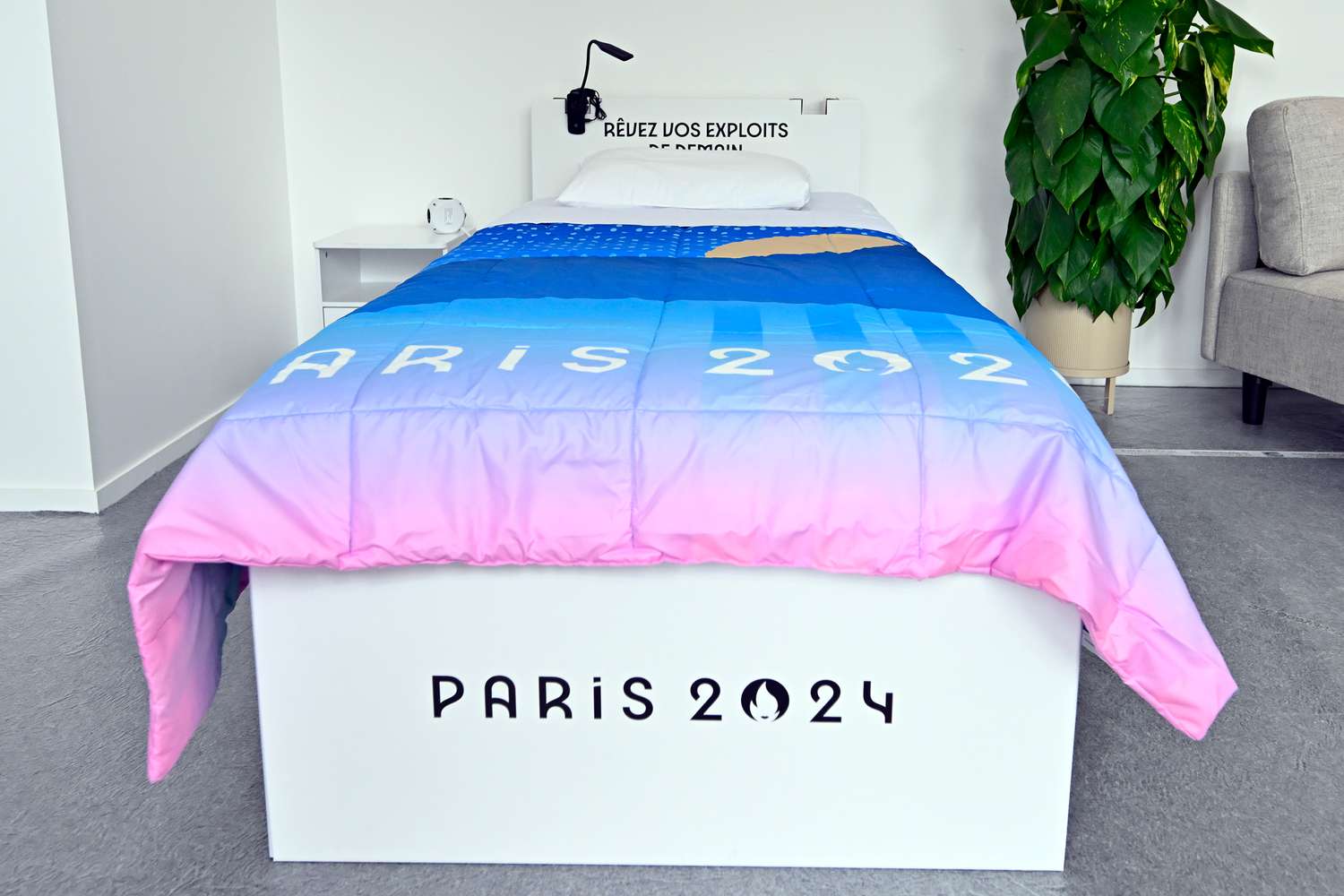
Give Cardboard a Chance!
While some Paris Olympics visitors may not recognize the strength and sustainability of cardboard furniture, the architecture & design (A&D) community has known about this quotidian material since at least 1954. It’s old-hat, people! Acclaimed architects, engineers, and product designers all over the world have turned the humble material into cutting-edge icons.
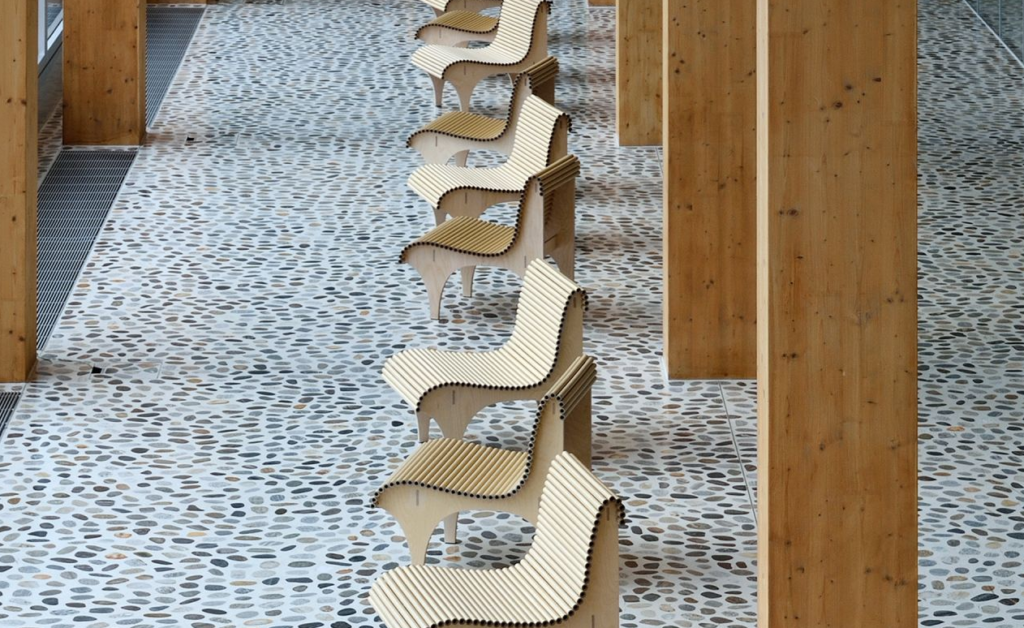
The Japanese company behind the Paris Olympics beds is Airweave—and they have done a lot of sleep and materials research. Their mattresses are endorsed by famous athletes, including the absolutely adorable ice dancers Meryl Davis and Charlie White (see below).

The Airweave bed is in good company, since so many designers have chosen cardboard as a preferred material. Here are a few moments of cardboard glory to put the Olympic sleep setup in perspective.
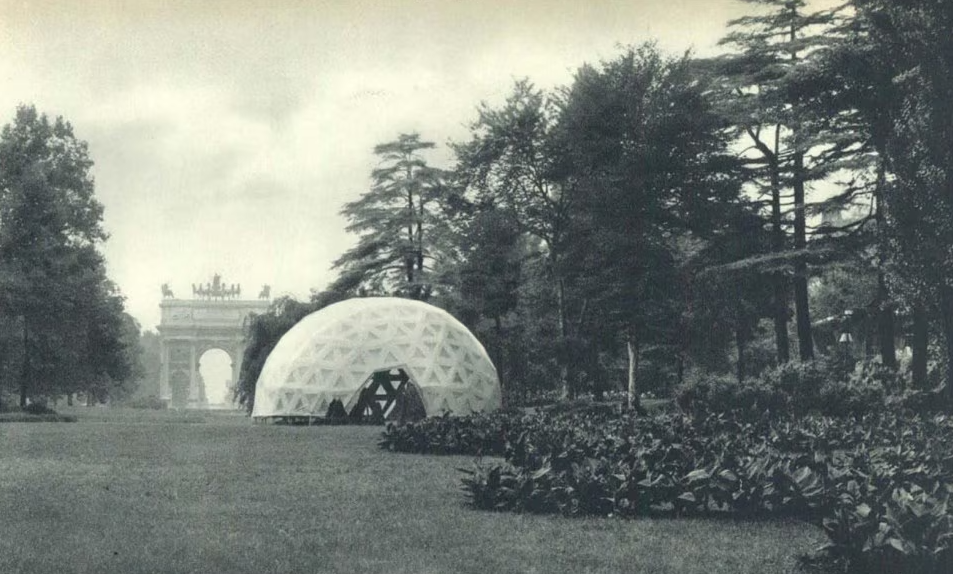
1954: Cardboard Geodesic Dome by R. Buckminster Fuller
Eco-conscious inventor and design scientist R. Buckminster Fuller was ahead of his time. He discovered “that if a spherical structure was created from triangles, it would have unparalleled strength.” For the 1954 Milan Triennale, Fuller created a geodesic dome constructed of cardboard. Installed at the old Sforza garden, the 42-foot paperboard Geodesic won the exhibition’s highest award, the Gran Premio.

1972: Wiggle Side Chair & Stool by Frank Gehry
Frank Gehry was the first architect to see the aesthetic possibilities of cardboard furniture. His iconic Wiggle Side Chair and Stool, designed for Vitra in 1972, graces the permanent collection of many museums, including The Art Institute of Chicago and the Museum of Modern Art.
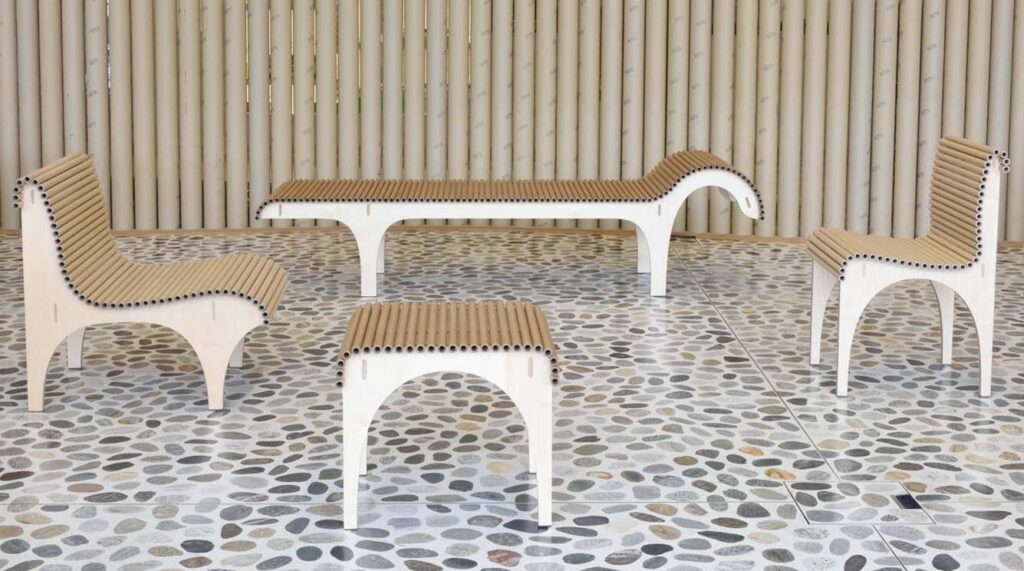
1998: Carta Collection by Shigeru Ban and wb form
Japanese architect Shigeru Ban put cardboard tubes to good use in his Carta Collection for wb form. The collection is made of natural, biodegradable materials—including cardboard. The Carta Collection of 2015 broadened from Ban’s 1998 Carta Series, which included the classic Carta Chair.
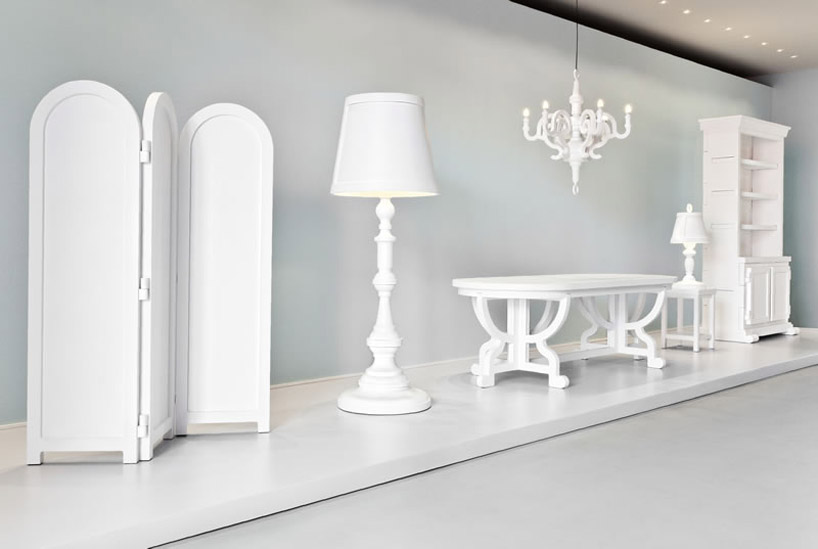
2005 & 2012: Paper Furniture and Paper Patchwork by Studio Job for Moooi
The Maximalist designers at Studio Job created the all-white Paper Furniture collection in 2005, which included the improbable but perfectly safe Paper Chandelier.

After the success of their first paper collection, Studio Job released the colorful Paper Patchwork furniture in 2012, also for Dutch brand Moooi. We wrote about Paper Table Patchwork some years ago.
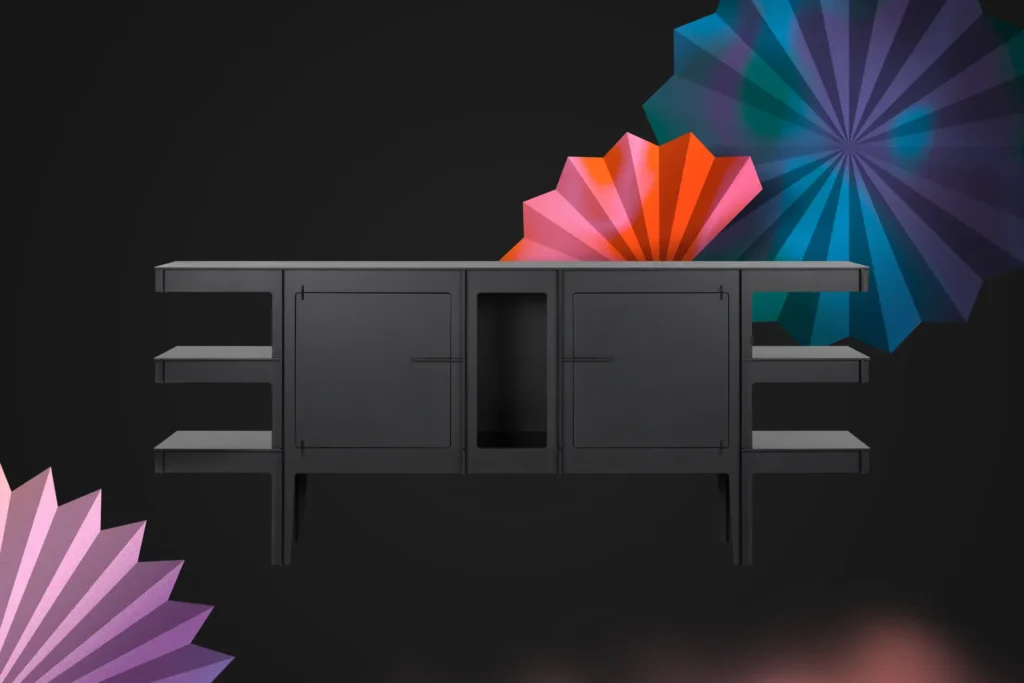
2021: No Screw No Glue Buffet by Joost Van Bleiswijk for Moooi
The lovely No Screw No Glue Buffet by Joost Van Bleiswijk for Moooi is made of Richlite, an eco-friendly material combining recycled paper and responsibly harvested trees. For all the people out there complaining of cardboard, just imagine: there is furniture made of paper!
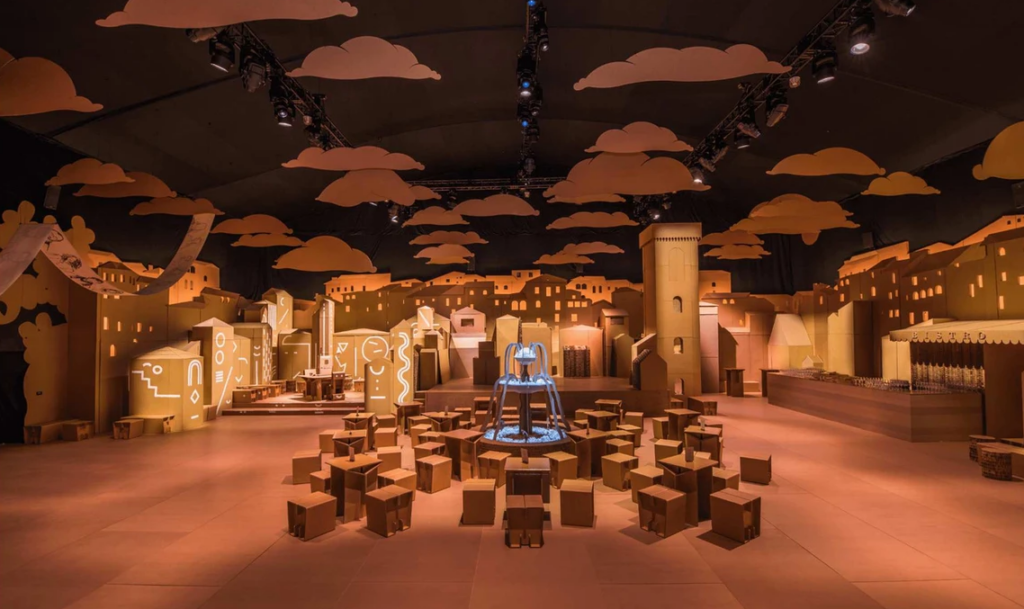
Enjoy Cardboard Furniture Everywhere!
For nonbelievers who are feeling despondent about the “no-sex” beds provided to Olympic athletes, fear not. Cardboard furniture has already proven itself. Its strength is amazing, in fact. It can be flat-packed, which reduces shipping costs and carbon emissions. Some cardboard furniture can even be built without tools, making it a wonderful option for students. And it can be formed into terrific shapes.

The German company Room in a Box manufactures lots of cardboard furniture, as does American brand Chairigami.

Molo Design was experimenting with cardboard forms way back in 2008 when we raved about it.
Airweave Sleep System for Olympic Athletes
Airweave is better known for its cutting-edge mattresses, which feature air. The company’s Airfiber® material is composed of 90 percent air, giving it ultimate breathability. The material is hypoallergenic as well—and bed bugs can’t live in Airfiber!
For the Paris Olympics, Airweave modified their mattresses specifically for athletic performance—for all types of athletes. See this video to get a quick rundown on the Airweave Olympic mattress, which is easily adjustable.
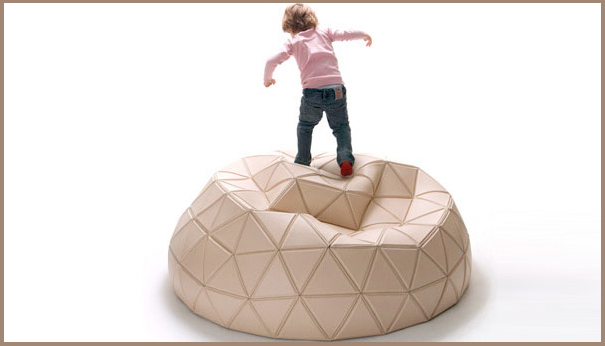
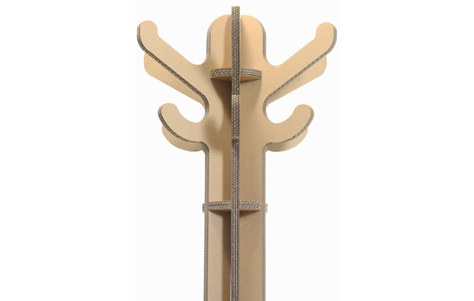
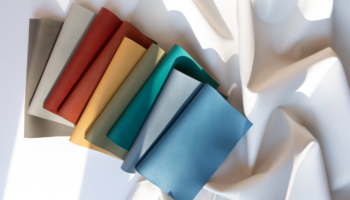

Leave a Reply